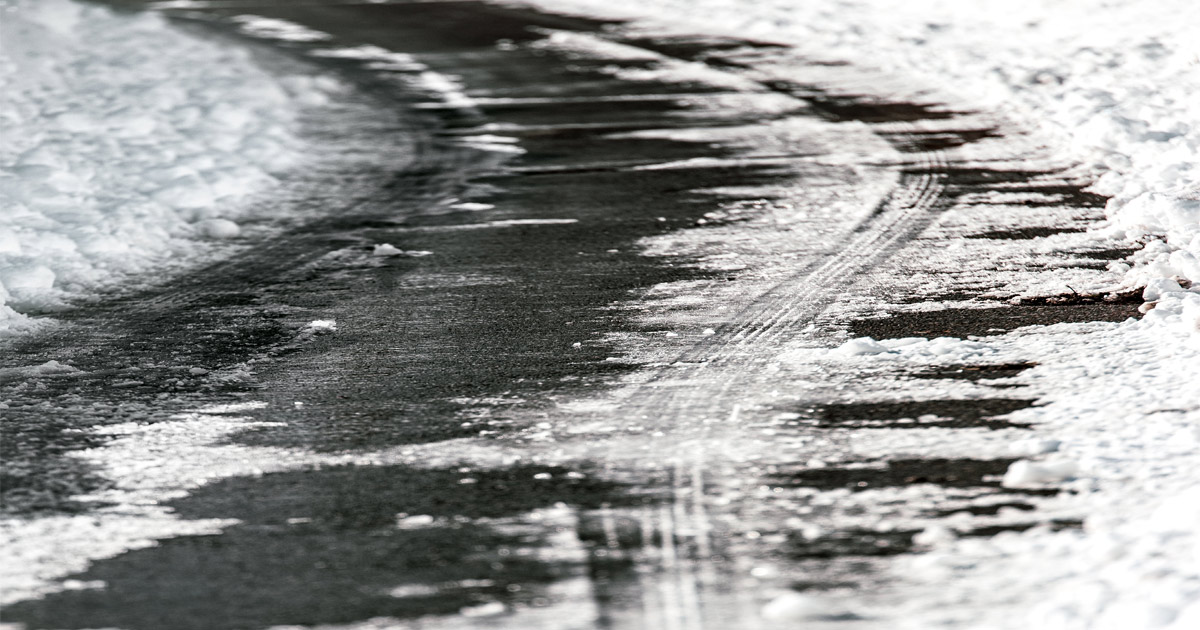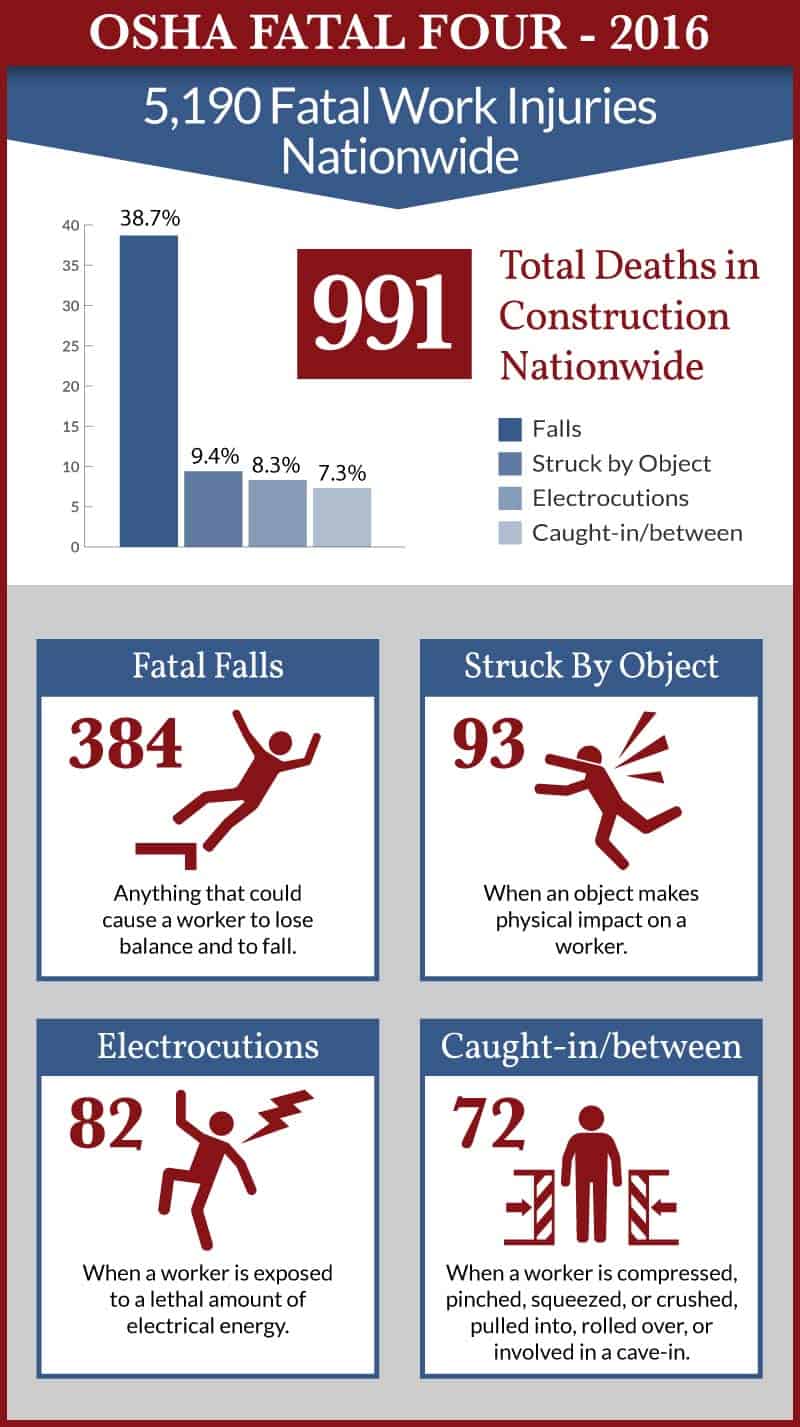Who is Liable for a Car Accident on Black Ice?

All drivers must follow the rules of the road and use reasonable care when driving to avoid injuring others. If a driver does not uphold this duty of care and someone else is injured as a result, they may be financially responsible for the victim’s losses. The law is clear when it comes to a driver who causes a car accident. A negligent driver might be responsible for damages.
What about when a car accident is caused by black ice? One might assume that weather conditions were to blame, and no one will be held legally accountable. This is not always the case; the driver who hit the patch of black ice will most likely be liable for consequent damages. In black ice car accidents, responsibility largely depends on the circumstances of the case and the location of the collision.
Understanding Weather-Related Car Accidents
There are approximately over five million vehicle crashes each year in the United States, 21 percent of which are weather-related, according to the U.S. Department of Transportation Federal Highway Administration (FHWA). Due to traffic accidents, adverse weather contributes to more deaths than large-scale weather disasters. FHWA statistics reveal that on average, nearly 5,000 people are killed and 418,000 are injured in weather-related crashes each year. By comparison, approximately 379 people die each year due to flooding, lightning, tornadoes, and hurricanes.
Based on 10-year averages of National Highway Traffic Safety Administration (NHTSA) data, most weather-related crashes occur when the pavement is wet or during rainfall. Only 18 percent of accidents happen during snow or sleet, 16 happen percent on snowy or slushy pavement, and 13 percent happen on icy pavement. For an average year, approximately 15 percent of fatal crashes, 19 percent of injury crashes, and 22 percent of property-damage-only crashes occur in the presence of adverse weather. One particularly dangerous cause of weather-related accidents is black ice.
What is Black Ice?
Black ice forms on top of pavement. It only appears black because it is transparent, allowing the black color of the pavement to show through. Since it blends in with the pavement underneath, drivers may have a hard time seeing it.
To avoid hitting a patch of black ice, it is helpful to know how and where black ice forms. When the temperature drops below freezing and the roads are already wet, a thin coat of transparent black ice may form. Black ice may also form when the temperature drops below freezing in dewy or foggy conditions. The most common locations for black ice are bridges, overpasses, and shaded spots on the roadways because they receive less sunshine during the day.
When a driver hits a patch of black ice, they might lose control of the vehicle and crash into another car or object. It takes longer to come to a complete stop when skidding over black ice than when driving on dry pavement; therefore, a driver might not be able to brake in time to avoid an accident.
What Factors Lead to Black Ice Car Accidents?
Not all accidents involving black ice are unavoidable. Sometimes, there are other contributing factors that cause these collisions, such as:
Distractions: Distracted driving is an increasingly common cause of car accidents. In 2018, approximately 2,841 people were killed and 400,000 were injured in distracted driving crashes, according to the NHTSA. When drivers are distracted, they are less likely to notice and avoid black ice.
Speeding: Speeding has been involved in approximately one-third of all motor vehicle fatalities for more than two decades, according to the NHTSA. When speeding is involved, the risk of serious injuries increases.
Poor Roads: When roads are not properly designed or maintained by the city, county, or state, black ice can accumulate and cause accidents. Failure to salt the roads or clear ice may also contribute to car accidents.
Improperly Maintained Vehicles: Drivers should maintain their vehicles, especially during the winter season. Faulty brakes, windshield wipers, or headlights can all contribute to black ice car accidents.
Can Black Ice Car Accidents be Avoided?
In addition to driving cautiously when roads are icy, drivers can take several precautions to avoid being involved in a black ice collision. Some tips for avoiding a black ice car accident include:
- Adjusting mirrors, seats, and steering wheel before heading out.
- Being especially careful when driving at night and during the early morning hours.
- Checking the vehicle’s brakes, tires, and fluids.
- Cleaning the headlights and making sure they are working.
- Avoiding cruise control options.
- If driving over black ice, keep the steering wheel straight. Do not brake suddenly as this may cause the vehicle to slide. Reduce speed by taking the foot off of the accelerator.
- Leaving extra headway.
- Looking out for the glare of black ice, especially when driving over bridges, overpasses, and in tunnels.
- Preparing the vehicle for winter conditions, such as checking anti-freeze levels, tire pressure, and the battery, as well as clearing off ice and snow from the vehicle before getting on the road.
- Slowing down.
- Staying home when the roads are wet or icy.
Liability for Car Accidents Caused by Black Ice
Pennsylvania is one of only a few states that follows the choice no-fault rule when it comes to car insurance. Under this system, drivers may choose either full tort or limited tort coverage. Full tort coverage is more expensive, but it gives drivers more options for compensation in the event of an accident, such as recovering compensation from an at-fault driver. Limited tort insurance restricts drivers to collecting compensation from their own insurance company, regardless of fault. With no-fault insurance, injured drivers may not be able to recover for all the costs arising from their injuries, including non-monetary losses, such as pain and suffering.
The type of car insurance will determine what rights the plaintiff has regarding obtaining financial compensation for their injuries. A person who has no-fault, limited tort coverage may not be able to pursue compensation from the negligent driver unless their injuries are severe. A serious injury typically involves disfigurement or the impairment of a bodily function.
In Pennsylvania, a plaintiff with full tort car insurance may recover for their injuries if they are deemed to be 50 percent or less at fault for their accident. Under the modified comparative fault standard in Pennsylvania, as long as they were 50 percent or less responsible for the accident, they may recover an amount that is reduced in proportion to their degree of fault. Therefore, a plaintiff who is 20 percent responsible for their accident may receive 80 percent of their damage award. A plaintiff who is 51 percent responsible may be barred entirely from recovery.
A plaintiff must meet the statute of limitations for a personal injury lawsuit. In Pennsylvania, the statute of limitations for personal injury cases is two years. It is advisable to seek legal counsel as soon as possible after a car accident.
Bucks County Car Accident Lawyers at Freedman & Lorry, P.C. Assist Victims of Black Ice Car Crashes
If you were injured because of a black ice car accident, contact a Bucks County car accident lawyer at Freedman & Lorry, P.C. Our knowledgeable legal team can evaluate your case, determine who was responsible for your accident, and help you recover compensation for your injuries. Contact us online or call us at 215-925-8400 for a free consultation. Located in Philadelphia, and Cherry Hill, New Jersey, we serve clients throughout Pennsylvania.
